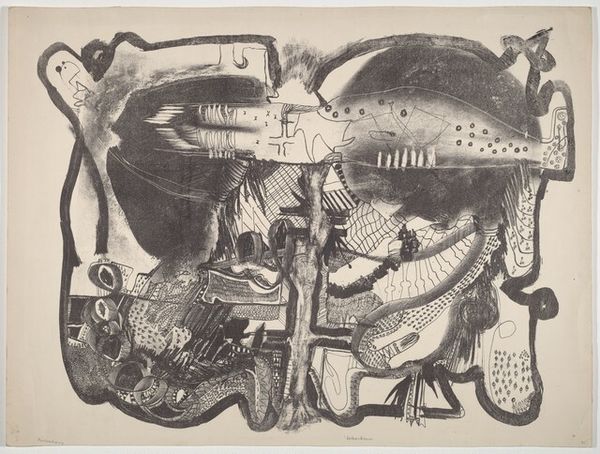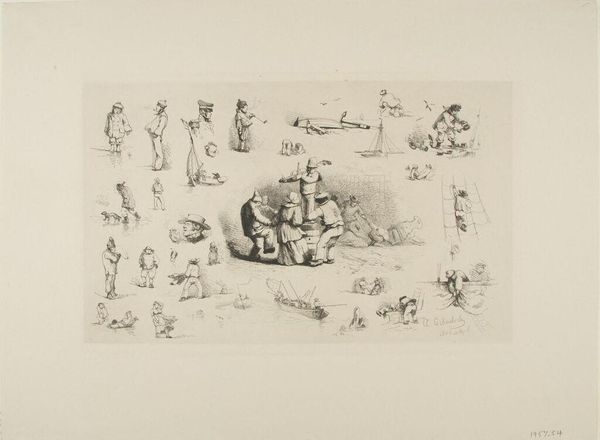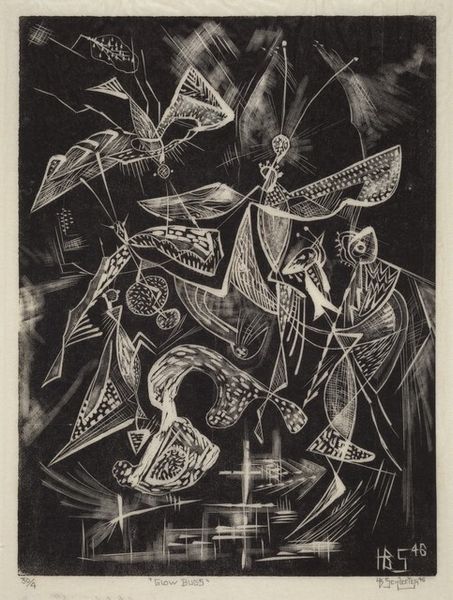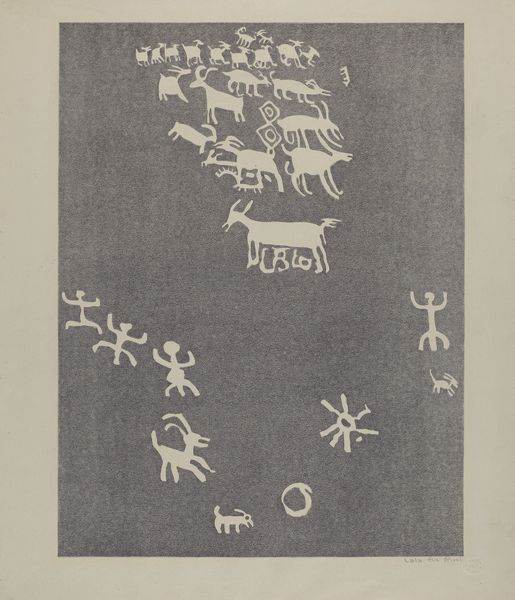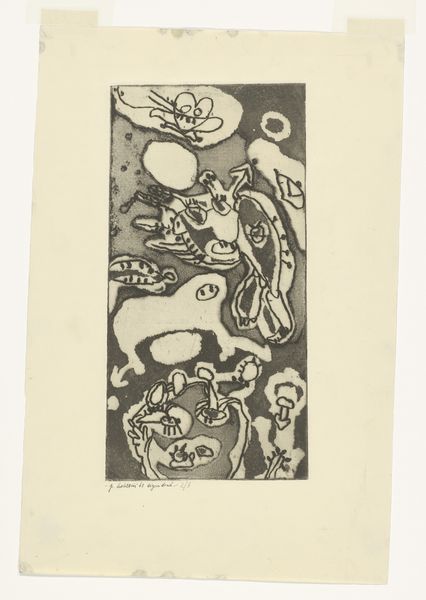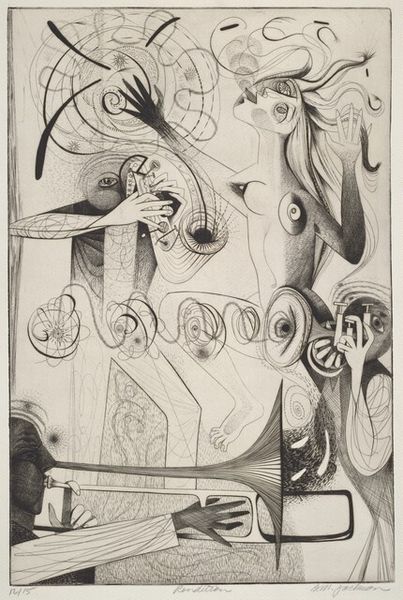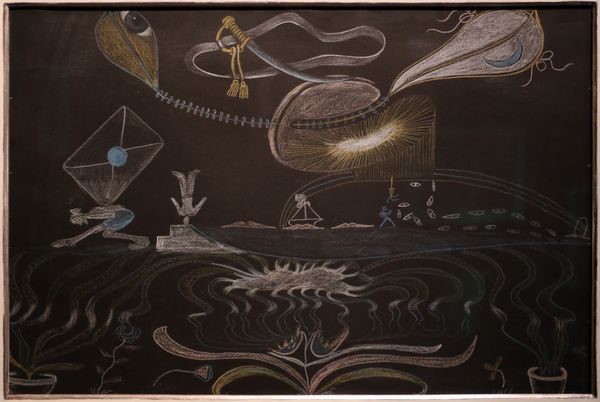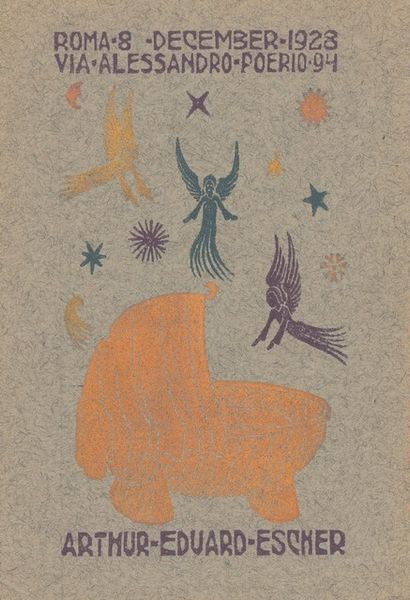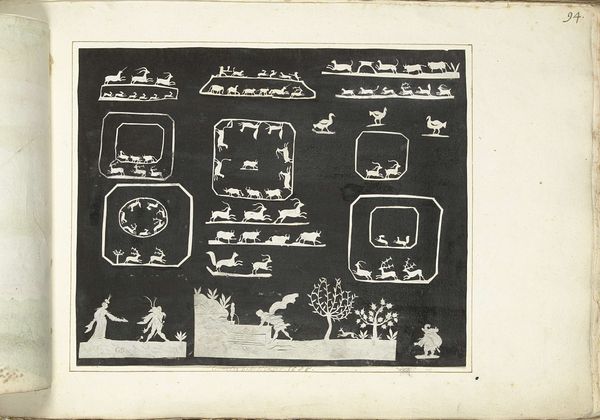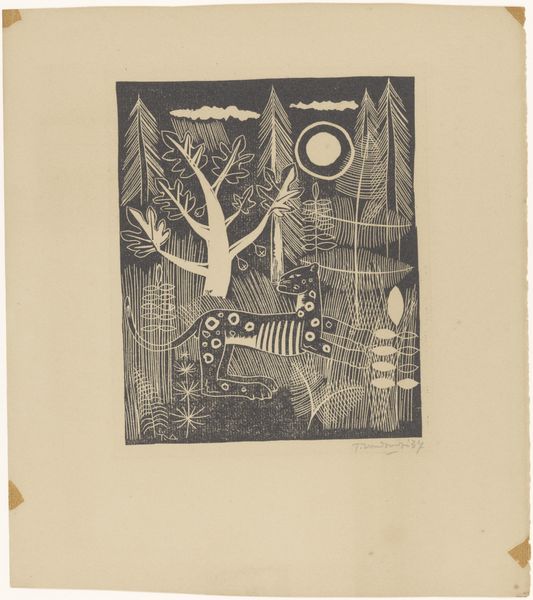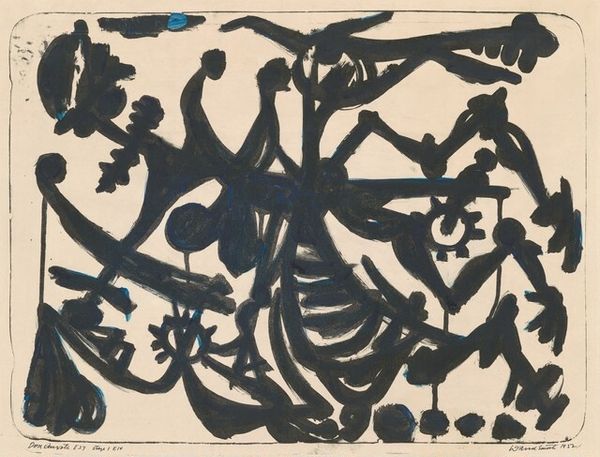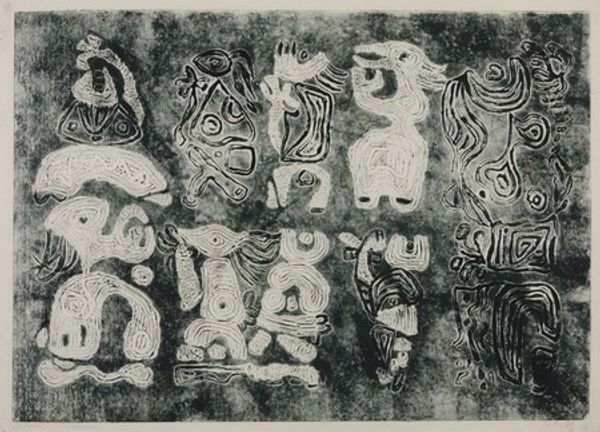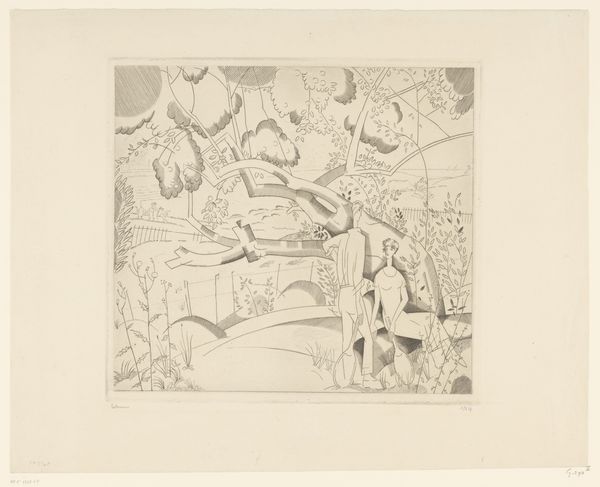
#
natural stone pattern
#
ink paper printed
# print
#
old engraving style
#
linocut print
#
wedding around the world
#
ethnic pattern
#
traditional style
#
illustrative and welcoming
#
coloring book page
#
doodle art
Dimensions: plate: 40.01 × 50.48 cm (15 3/4 × 19 7/8 in.) sheet: 52.71 × 74.93 cm (20 3/4 × 29 1/2 in.)
Copyright: National Gallery of Art: CC0 1.0
Editor: Here we have Gabor Peterdi's "Dark Visit," created in 1948. It’s a print, seemingly made with ink on paper, featuring an array of abstract shapes. The overall impression is quite otherworldly, even a bit unsettling. What can you tell me about it? Curator: Well, considering Peterdi’s history as a Hungarian immigrant to the US, and the date of this print, 1948, it's important to consider the social context of its production. This was a time marked by anxieties of the post-war era and the burgeoning Cold War, impacting material production as well as artistic themes. Editor: How does that connect with what we see in the artwork itself? Curator: Notice the printmaking process, likely etching or engraving, involving labor-intensive techniques. Peterdi skillfully utilizes the medium, manipulating the material qualities of ink and paper to create these complex, layered compositions. The repetitive nature of printmaking raises questions about artistic labor and accessibility. Do you think this potentially challenged the art world at the time? Editor: Possibly! By moving away from unique paintings and toward something reproducible, he was blurring the lines between high art and…well, something closer to craft. Curator: Precisely! Furthermore, we might analyze the very materials – the paper, the inks. Were these mass-produced? Scarce because of post-war restrictions? Examining such limitations can provide insights into the artist’s choices. Considering Peterdi's position within the broader artistic landscape of the 1940s—a shift toward abstraction but while clinging to some labor intensive methods and practices. Editor: It's interesting to think about artmaking not just as an aesthetic choice, but also a reflection of available resources and cultural pressures. It gives another way to think about what artists do and why. Curator: Exactly! Thinking materially opens many avenues for analyzing a piece and places the creative process in context.
Comments
No comments
Be the first to comment and join the conversation on the ultimate creative platform.
